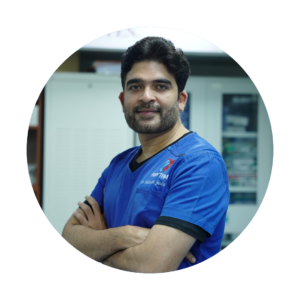A heart attack can be a life-changing event, but it doesn’t have to define your future. With the right treatment, timely care, and healthy lifestyle changes, most people recover well and lead fulfilling lives.
In this guide, we’ll explain your treatment options after a heart attack, when open heart surgery may be needed, and how you can plan a safe recovery with help from Dr. Manish Juneja, one of Nagpur’s leading interventional cardiologists.

What Happens After a Heart Attack
When a heart attack (myocardial infarction) occurs, blood flow to part of the heart muscle is blocked, usually by a clot in a coronary artery. Quick treatment is critical to restore blood flow and limit damage.
You can learn more about Angioplasty and Stenting — the life-saving procedure.
Treatment Options After a Heart Attack
After surviving a heart attack, the next steps are crucial for protecting your heart and preventing future problems. Let’s break down the three main treatment paths and what they mean for your recovery.
Emergency Procedures: Angioplasty and Stenting
For most heart attack patients, the first line of treatment is an emergency procedure to restore blood flow quickly. This procedure is known as angioplasty, also referred to as Percutaneous Coronary Intervention (PCI).

Here’s how it works:
- A tiny tube called a catheter is inserted into a blood vessel in your wrist or groin.
- A small balloon at the tip is inflated at the site of the blockage to widen the artery.
- A stent, which is a tiny wire mesh tube, is then placed to keep the artery open permanently.
Why it matters:
Restoring blood flow within the first few hours of a heart attack can save heart muscle, reduce damage, and lower the risk of complications.
Medications and Ongoing Care

Treatment doesn’t end with the procedure, it’s the start of long-term care. After angioplasty or CABG, patients typically take a combination of medicines to keep the arteries open and the heart strong:
- Blood thinners (like aspirin or clopidogrel) prevent new clots.
- Beta-blockers help your heart work more efficiently.
- ACE inhibitors or ARBs may be prescribed to lower blood pressure.
- Statins help control cholesterol levels and prevent plaque buildup.
You’ll also need to monitor your heart health with regular follow-ups, blood tests, and lifestyle adjustments. Also, read heart health blogs for regular tips.
Open Heart Surgery (CABG)

Coronary Artery Bypass Grafting (CABG), known as open heart surgery may be necessary when blockages are:
- Too severe or spread across multiple arteries, making stenting impossible.
- Located in hard-to-reach places that a stent cannot safely open.
- Recurrent, even after previous stents or angioplasty.
How it works:
A healthy blood vessel, often taken from your leg or chest, is grafted to create a new route for blood to bypass the blocked artery. This restores blood flow to the heart muscle.
Conclusion
Recovering from a heart attack can feel overwhelming, but with the right treatment, expert care, and healthy lifestyle changes, you can take charge of your heart health and enjoy a full life.
Whether you need an emergency angioplasty and stenting, long-term medications, or even open heart surgery (CABG), the most important step is working with a trusted heart specialist who understands your unique condition.
Dr. Manish Juneja, one of Nagpur’s leading interventional cardiologists, brings years of expertise in complex angioplasty, advanced stenting, and comprehensive cardiac care, ensuring every patient receives personalized, evidence-based treatment.

